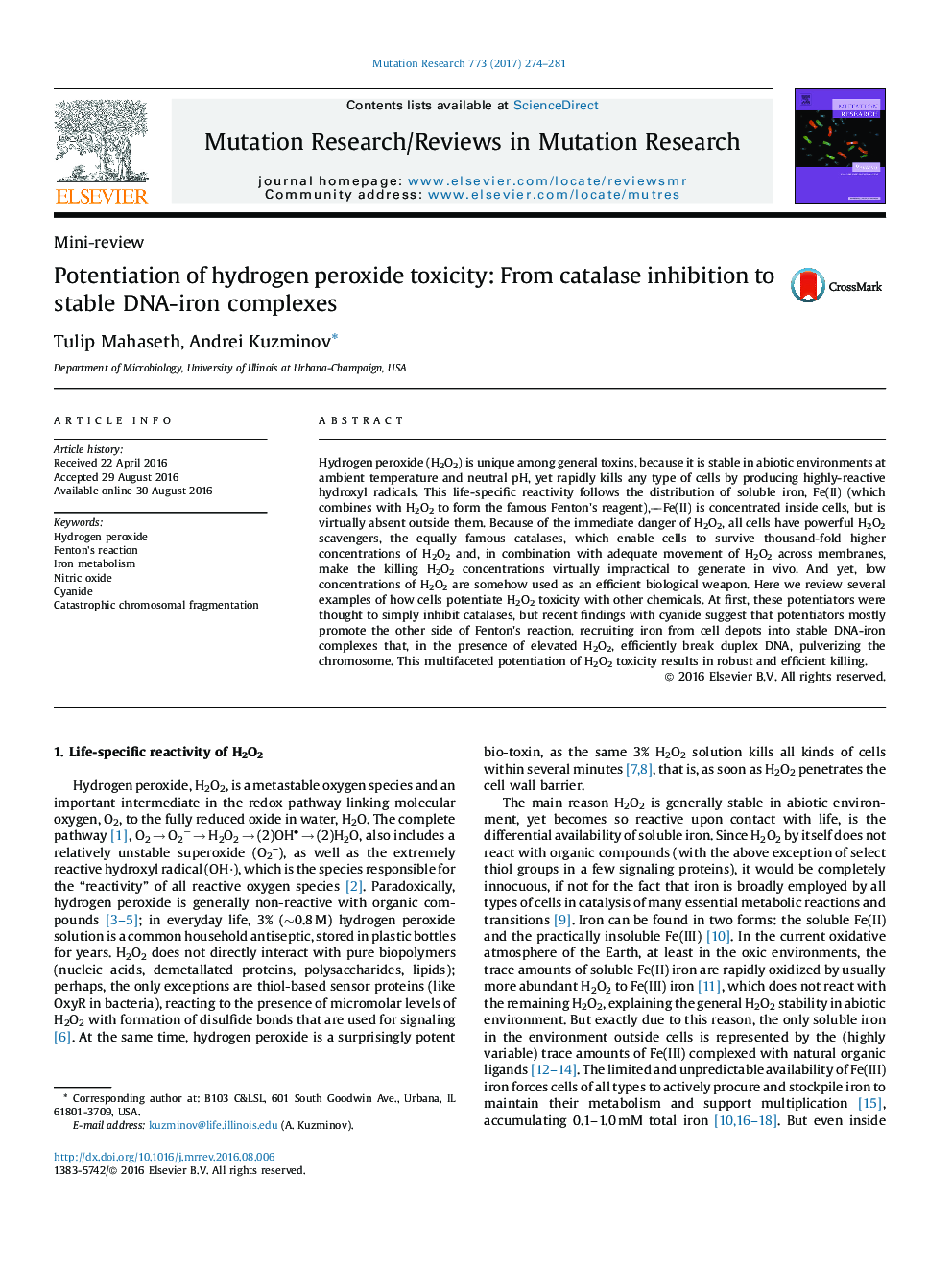| کد مقاله | کد نشریه | سال انتشار | مقاله انگلیسی | نسخه تمام متن |
|---|---|---|---|---|
| 5528884 | 1548742 | 2017 | 8 صفحه PDF | دانلود رایگان |

Hydrogen peroxide (H2O2) is unique among general toxins, because it is stable in abiotic environments at ambient temperature and neutral pH, yet rapidly kills any type of cells by producing highly-reactive hydroxyl radicals. This life-specific reactivity follows the distribution of soluble iron, Fe(II) (which combines with H2O2 to form the famous Fenton's reagent),Fe(II) is concentrated inside cells, but is virtually absent outside them. Because of the immediate danger of H2O2, all cells have powerful H2O2 scavengers, the equally famous catalases, which enable cells to survive thousand-fold higher concentrations of H2O2 and, in combination with adequate movement of H2O2 across membranes, make the killing H2O2 concentrations virtually impractical to generate in vivo. And yet, low concentrations of H2O2 are somehow used as an efficient biological weapon. Here we review several examples of how cells potentiate H2O2 toxicity with other chemicals. At first, these potentiators were thought to simply inhibit catalases, but recent findings with cyanide suggest that potentiators mostly promote the other side of Fenton's reaction, recruiting iron from cell depots into stable DNA-iron complexes that, in the presence of elevated H2O2, efficiently break duplex DNA, pulverizing the chromosome. This multifaceted potentiation of H2O2 toxicity results in robust and efficient killing.
Journal: Mutation Research/Reviews in Mutation Research - Volume 773, July 2017, Pages 274-281